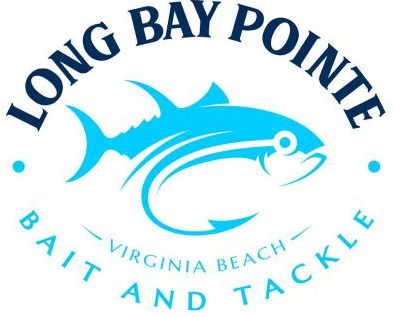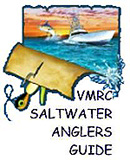
By DR Ken Neill III | Peninsula Salt Water Sport Fisherman’s Association
Virginia Saltwater Fishing News
Spring has sprung and a new fishing season is upon us. There have been some changes for this year and likely, there will be more to come.
Shark fishing has become even more regulated this year. Anglers fishing for sharks in federal waters must now use non-offset circle hooks. They also have to have a special shark endorsement with their HMS permit. We catch sharks in state waters but if you do have an HMS permit (used to be your tuna permit) for fishing offshore, you have to abide by circle-hook rule even in state waters if you are fishing from an HMS permitted vessel. You can get this endorsement online, while ordering your permit. You watch a video on shark identification which is followed by a quiz.
NOAA has been encouraging anglers to release shortfin makos for some time. Now you will have to release most any that you catch. The possession limit is still one fish per boat but the minimum size has been increased to a 83-inch fork length.
There has been a good run of large bluefin tuna. We are allowed to keep one “trophy” bluefin tuna per vessel per year but what has become the norm, this fishery has been closed early again this year. The current bluefin tuna regulations allows for the retention of one bluefin tuna per vessel per day measuring at least 27 inches but less than 73 inches fork length.
The bluefin tuna have been large this spring. Before the closure of the trophy season boats out of Oregon Inlet, along with some boats making the run south out of Virginia, experienced great action on fish in the 500 plus pound class. On the last day the trophy fishery was open, an 877 pound bluefin was weighed in as the pending North Carolina record. Big tuna continue to be caught but now must be released.
Tautog regulations have been relaxed a bit. The bag limit has been increased to 4 fish. Minimum size is 16 inches. The season length has been greatly increased with a closure from May 16 through June. It is open the rest of the year.
Sea bass is another fishery that has been expanded. We had an open fishery this February for the first time in many years. The regulations for the rest of the year will be set at the April VMRC meeting but are expected to be an opening May 15 with the season open the rest of the year, without the one-month closure in the fall that we have had for a number of years. We also expect to have a January and February sea bass fishery for 2019 but keep following this.
The keeper-size for flounder has been reduced to 16.5 inches. The bag limit is 4-fish per person.
Tilefish regulations are undergoing major changes. We had no regulations from Virginia on north. When this fishery was “discovered”, Virginia enacted regulations while waiting for the federal system to catch up. Virginia cannot set regulations for federal waters but can regulate what is brought into Virginia. We have had a 7 fish tilefish (combined species) and a 1 fish grouper bag limit with a year-round fishery for a number of years. The federal system has caught up with tilefish (no changes with grouper so still just Virginia’s one per person bag limit). We now have an 8-fish golden tilefish bag limit and that fishery is open year-round. Blueline tilefish was closed. It will re-open May 1 and remain open through October under the most bizarre bag-limits I have ever seen. Recreational anglers will have different bag limits based on the type of boat they are fishing from. If you are on an inspected vessel (those licensed to carry more than 6 passengers) your bag limit is 7 fish. Examples of these boats here are the High Hopes and Ocean Pearl. If you are fishing from most charter boats, your bag limit is 5 fish. If you are fishing from non-charter boat, your bag limit is 3 fish. These new blueline tilefish regulations come with new federal reporting requirements. These new requirements are not being applied to those fishing under the 3-fish bag limit this year. We still have Virginia’s mandatory permit and reporting requirements for tilefish and grouper.
Cobia regulations have been very contentious the past couple of years with federal managers using data that is simply unbelievable to many. Virginia did not go along with a federal closure and set very conservative regulations for state waters. This year, the ASMFC is involved with cobia management and we are working to get better data. Based on what data we have, a 3-year rolling soft quota has been set. This gives us a number to aim for but will not require a fishery shut down if we get some crazy spike one year in survey estimates.
Virginia had the option of relaxing cobia regulations this year. We could have increased the boat limit to 4 fish, gotten rid of the “only one over 50 inches”, and gotten rid of the no-gaffing provision. A bit surprisingly, the vast majority of anglers and charter captains who weighed in favored keeping the boat limit at 3 fish and keeping the only one big fish rule. They did want to get rid of the no gaff rule. There were a number of options on the season with the majority favoring a June 1 opening and remaining open through the end of September. The second most popular choice was a May 15 opening and a September 16 closure. Personally, this second option was my favorite and I have not gaffed a cobia in years. What I supported at VMRC was what was most asked for by recreational anglers and that is what passed. I was rather proud of Virginia’s anglers supporting regulations more conservation oriented than we could have done.
So for 2018, our cobia season will begin on June 1 and you can keep fish through September. The daily bag limit remains 1 fish per person up to 3 fish per boat. Only one fish per boat may be over 50 inches. The minimum size is still 40 inches. The prohibition on gaffing is removed but please do not use a gaff unless you are sure it is fish that you are going to keep. The free Cobia Permit along with mandatory reporting is still required for an ongoing effort to get more accurate data.
We’ve been getting a lot of questions about the Cobia Bowl. The Cobia Bowl was begun as a fun way for anglers to help gather information about Virginia’s cobia fishery and to help raise funds for fisheries research. Due to great sponsorship support and angler participation, this fishing tournament has been a great success. We are pleased to announce that we have even bigger and better plans for 2018. The Cobia Bowl is joining forces with the Old Dominion University Alumni Association for the Monarch Cobia Classic. Our goal is to create the largest cobia tournament on the East Coast. We invite Cobia Bowl sponsors and anglers to join us for what will be a fantastic event with great fishing, bigger parties, and even more fun all while supporting great causes. The Monarch Cobia Classic will raise funds to support scholarship and research. This event will be held July 19-21, during the peak of the cobia season. For more information about the Monarch Cobia Classic and to learn about sponsorship opportunities, visit www.odualumni.org/cobiaclassic





























 Views Last 7 days : 1682
Views Last 7 days : 1682 Views Last 30 days : 7016
Views Last 30 days : 7016